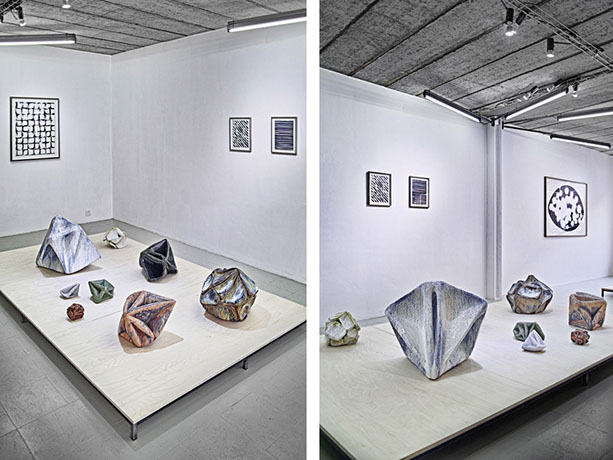'Dingen' Robin Vermeersch (BE)
solo exhibition
DFFRNCE - Robin Vermeersch - 2017
CAMOUFLAGED PEARLS#2 . - 2019










Ping a Pong - Robin Vermeersch - 2017-2018
ceramics, epoxy, metal and oil collors
En Hop - Robin Vermeersch - 2017-18
epoxy, polyester, wood, oil, Sanseveria - 170 x 60 x 60cm
En Hop - Robin Vermeersch - 2017-18
epoxy, polyester, wood, oil, Sanseveria - 170 x 60 x 60cm
Sukkelaar - Robin Vermeersch - 2018
epoxy, wood - 220 x 60 x 60cm
Hooplala - Robin Vermeersch - 2017-18
ceramics, epoxy, polyester - 102 x 94 x 12cm
The Roundabout - Robin Vermeersch - 2018
ceramics - 44 x 47 x 5cm
Boucles De Mayenne - Robin Vermeersch - 2018-19 (Camouflaged Pearls #2 exhibition)
ceramics & polyester & epoxy - 120 x 42 x 21cm
Louis IX - Robin Vermeersch - 2019 (Camouflaged Pearls #2 exhibition)
Oil on canvas - 63 x 53cm
Hang in there Man #1 - Robin Vermeersch - 2019 (Camouflaged Pearls #2 exhibition)
Ceramics & epoxy - 257 x 15 x 15cm
9 - 9
<
>
About the exhibition: DINGEN (THINGS)
In the DINGEN (THINGS) exhibition Robin Vermeersch (B °1977) confronts drawings with sculptural work for the very first time.
The title of this exhibition project refers to objects, 'things' that can stand alone and tell their own story. In the Bruthaus Gallery's main space his sculptures are also displayed as things on the floor. They are present and refer to something without it being real.
Robin's floor sculptures consist of geometric shapes, which wink at abstract, corporate modernism. His drawings are characterised by one and the same origin.
The artist envelops these formal mathematical shapes with organic tissue, which is draped over them and which eventually overgrows the rational, geometric structures and patterns. It wrestles with the clean-cut shape and takes root on and in the structure, creating a new shape. That which is seemingly real becomes palpable, tangible and human.
The rational basis of these works is countered by the intuitive skin. The ceramic material plays a major role in this respect; it cannot be controlled but is governed by its own rules and laws.
In addition to this duality light plays a third crucial role in Robin Vermeersch's work: when does a form or a structure in a drawing appear and disappear, what do we see and what is concealed between a sculpture’s folds?
The pencil drawings gradually emerge and the light is filtered out in a subtle manner. These shapes also appear to refer to, but are not, other, existing organisms. They are derived from things in the world that we seemingly know but that still stand alone in their own right.
In the display cabinet the artist constructs a landscape from different sculptures that refer to each other, which are placed or hung against an organic painted background. They look like elements in a theatrical decor, each with its own function and identity.
At the same time they play a game with each other and the background, as in one vast world to which they belong.
It is literally like looking at another world, displayed behind glass.
One large, inseparable family.
R.V. & BG.